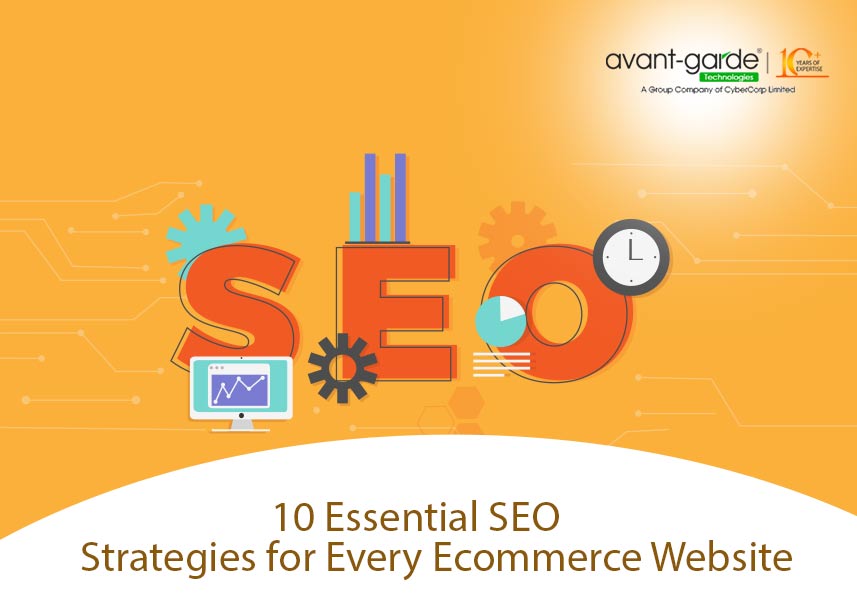10 Essential SEO Strategies Every Ecommerce Website Should Implement
In the vastness of the Internet, where millions of websites compete for visibility, a solid search engine optimization (SEO) strategy is paramount for any e-commerce business. With search engines like Google constantly evolving their algorithms, staying ahead of the SEO game requires a proactive approach. Whether you're a startup or an established e-commerce retailer, implementing these 10 essential SEO for ecommerce strategies can dramatically improve your e-commerce site's visibility, traffic, and ultimately sales.
1. Do thorough keyword research
Keyword research is the foundation of all successful SEO strategies. Identify relevant keywords and phrases that your target audience is likely to use when searching for the products you offer. Use tools like Google Keyword Planner, SEMrush, or Ahrefs to find high-volume, low-competition keywords related to your products and brand.
2. Optimize Product Pages
Every product page on your e-commerce website should be optimized properly for search engines. Include your target keywords naturally in page titles, meta descriptions, URLs and product descriptions. To improve visibility in image search results, make sure product images are optimized with appropriately descriptive file names and alt tags.
3. Create Quality Content
Include a blog or resource section on your e-commerce site to publish relevant and engaging content. Write informative articles, guides and product reviews that meet the needs and interests of your audience. By consistently producing high-quality content, you attract organic traffic, but also establish your brand as an authority in your niche.
4. Optimize site structure and navigation
Well-organized site structure, on page optimization and intuitive navigation are important for both users and search engines. Make sure your e-commerce site is easy to navigate with clear categories, sub-categories and internal links. Enable a navigation path that helps users and search engines understand the hierarchy of your site.
5. Improve Page Load Speed
Page Speed is a critical ranking factor for search engines and a deciding factor in terms of user experience. Optimize your e-commerce site for fast loading times by minimizing image sizes, using browser caching, and using content delivery networks (CDNs). Monitor and optimize your website's performance regularly using tools such as Google PageSpeed Insights or GTmetrix.
6. Mobile Optimization
Most web searches are now done on mobile devices, so optimizing your e-commerce website for mobile devices is a non-negotiable. Make sure your website is responsive and mobile friendly, with easy navigation, readable text and optimized images. Google mobile indexing means that the mobile version of your website is now the main determinant of its search engine ranking. If you want a seo for an ecommerce website, then contact AGTS, because we make the best
seo strategy for ecommerce website all over India.
7. Apply Structured Data Markup
Structured data markup like Schema.org provides search engines with additional context about the content of your e-commerce site. Enable structured data tags of products, reviews, prices and other relevant information to enhance your search listings with Rich Snippets. Rich snippets can improve click-through rates and bring higher quality traffic to your website.
8. Protect your site with HTTPS
Security is a top priority for both users and search engines. Switch to HTTPS by installing an SSL certificate on your e-commerce website, which encrypts data transmitted between your website and users' browsers. In addition to improving security, HTTPS is now Google's ranking factor, which means that secure websites can move up a bit in the search engines.
9. Take advantage of social media
Social media can play an important role in improving the visibility and traffic of your e-commerce site. Share your products, blog posts and campaigns on popular social media sites like Facebook, Instagram, Twitter and Pinterest. Connect with your audience, participate in relevant conversations and encourage social sharing to expand your reach and attract potential customers. For ecommerce SEO, contact with the
best digital marketing agency in kolkata.
10. Monitor, Analyze and Adjust
SEO is an ongoing process that requires constant monitoring, analysis and adjustment. Use tools like Google Analytics and Google Search Console to monitor your website's performance, track keyword rankings, and identify areas for improvement. Analyze user behavior, conversion rates and other important metrics to refine your SEO strategy and stay ahead of the competition.
Conclusion
Overall, implementing these 10 essential SEO strategies can dramatically improve the visibility, traffic, and ultimately success of your e-commerce site. By conducting thorough keyword research, optimizing product pages, creating quality content, and focusing on factors such as URL structure, page speed, and mobile optimization, you can improve your site's search engine ranking and attract higher quality traffic. Remember that ecommerce SEO is not a one-time task but an ongoing process that requires commitment, monitoring and adaptation to stay ahead of the competitive e-commerce market and for that you require the best digital marketing agency in India,
AGTS.
Contact Now.

